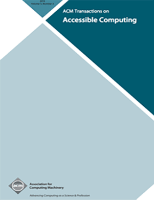
ACM Transactions on Accessible Computing
Scope & Guideline
Championing research in accessible computing.
Introduction
Aims and Scopes
- User-Centric Design for Accessibility:
Research that emphasizes designing technology and interfaces specifically for users with disabilities, ensuring that their unique needs are met through participatory design and user feedback. - Assistive Technologies and Tools:
Development and evaluation of assistive technologies, such as screen readers, tactile devices, and mobile applications, aimed at enhancing the capabilities and independence of users with various disabilities. - Inclusive Interaction Techniques:
Exploration of novel interaction methods that accommodate diverse user needs, including gesture-based controls, voice recognition, and augmented reality applications. - Empirical Studies on Accessibility:
Conducting empirical research to assess the effectiveness of existing technologies and identify barriers faced by users with disabilities, providing evidence-based recommendations for improvements. - Community Engagement and Social Inclusion:
Investigating how technology can foster social connections and community engagement among individuals with disabilities, particularly through social media and online platforms.
Trending and Emerging
- Health and Wellbeing Technologies:
There is a growing focus on technologies that enhance health and wellbeing for individuals with disabilities, such as stress detection using physiological data and self-tracking applications for medical management. - Machine Learning and AI in Accessibility:
The application of machine learning and AI to improve assistive technologies, including automatic speech recognition and sign language processing, is gaining prominence, indicating a shift towards more intelligent, adaptive solutions. - Social Media and Digital Communities:
Research is increasingly addressing the role of social networking sites and online communities in promoting social inclusion for people with disabilities, highlighting their impact on social interactions and support networks. - Augmented and Virtual Reality Applications:
The exploration of AR and VR technologies for training and rehabilitation purposes is emerging as a significant area of interest, showcasing their potential to create immersive experiences for users with disabilities. - Data Visualization for Accessibility:
There is an increasing emphasis on creating accessible data visualizations, particularly for users with visual impairments, indicating a trend towards making complex information more understandable and usable.
Declining or Waning
- General Accessibility Guidelines:
The specific development of universal accessibility guidelines has decreased, possibly due to a shift towards more tailored solutions for specific disabilities rather than broad, generalized approaches. - Traditional Assistive Devices:
Research on traditional assistive devices, such as simple mobility aids, has seen a decline as the focus shifts towards digital and technology-driven solutions that offer more dynamic support. - Static Accessibility Assessments:
The emphasis on static assessments of web or software accessibility has waned, reflecting a trend towards more dynamic, user-centered evaluations that consider real-world usability and user experience. - Hardware-Focused Accessibility Solutions:
Research centered specifically on hardware solutions (e.g., specialized keyboards or mice) has diminished in favor of software and application-based solutions that integrate accessibility features.
Similar Journals

Universal Access in the Information Society
Exploring the intersection of technology and universal access.Universal Access in the Information Society is a distinguished academic journal published by SPRINGER HEIDELBERG, focusing on the critical fields of computer networks, human-computer interaction, information systems, and software. Established in 2003, this periodical aims to disseminate innovative research that tackles the challenges of universal access to information and communication technologies, making it a vital resource for researchers, professionals, and students dedicated to enhancing digital inclusivity. With a commendable impact reflected in its Scopus rankings, it places in the second quartile for Computer Networks and Communications and Information Systems, as well as in the third quartile for Human-Computer Interaction, verifying its pivotal role in advancing knowledge within these domains. Although currently not open access, the journal offers comprehensive insights that are essential for anyone looking to contribute to or comprehend the evolving landscape of information societal access. The journal's commitment to bridging knowledge gaps makes it indispensable for both academic and practical applications in the Information Society.
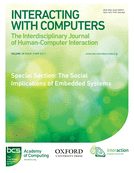
INTERACTING WITH COMPUTERS
Enhancing Connections Between Users and SystemsINTERACTING WITH COMPUTERS is a renowned journal published by Oxford University Press, focusing on the interdisciplinary field of Human-Computer Interaction, as well as aspects of Library and Information Sciences and Software. With a rich history of publication since 1989, this journal has established itself as a significant platform for scholars to disseminate cutting-edge research and innovative methodologies that enhance our understanding of how humans engage with technology. Despite being classified in the Q3 and Q2 quartiles across various categories, its 2023 Scopus rankings highlight its relevance, positioning it within the 69th percentile for Library and Information Sciences. This makes it an essential resource for researchers, professionals, and students looking to stay informed about the latest advancements and discussions in this rapidly evolving domain. Though not currently open access, INTERACTING WITH COMPUTERS offers substantial insights that are crucial for driving forward the conversation in Human-Computer Interaction, ensuring its relevance in both academic and applied contexts.

Journal of Postsecondary Education and Disability
Shaping the Future of Accessible Learning Environments.The Journal of Postsecondary Education and Disability (ISSN: 2379-7762; E-ISSN: 2328-3343), published by the Association on Higher Education and Disability (AHEAD), stands as an essential resource for researchers, professionals, and students dedicated to the study and enhancement of postsecondary education for individuals with disabilities. This esteemed journal aims to foster a deeper understanding of accessibility issues, inclusive practices, and policy development within higher education contexts, thereby facilitating academic discourse and innovative solutions. With its commitment to advancing knowledge and promoting best practices, the journal serves as a pivotal platform for sharing empirical research, theoretical discussions, and case studies that address the multifaceted challenges faced by students with disabilities. By providing high-quality content that bridges research and practice, the Journal of Postsecondary Education and Disability plays a critical role in shaping inclusive educational environments and empowering diverse student populations.

GetMobile-Mobile Computing & Communications Review
Unveiling Trends in Mobile CommunicationsGetMobile-Mobile Computing & Communications Review, published by the Association for Computing Machinery (ACM), is a leading journal dedicated to the evolving field of mobile computing and communication technologies. With an ISSN of 2375-0529 and an E-ISSN of 2375-0537, this publication serves as a vital resource for researchers, professionals, and students, providing insights into the latest advancements, trends, and challenges in mobile technology. The journal covers a comprehensive range of topics, including but not limited to mobile networks, communications protocols, mobile applications, and edge computing, making it invaluable for those in academia and industry alike. Although specific metrics such as impact factor and H-index are currently unavailable, GetMobile is recognized for fostering innovative research and promoting knowledge exchange in mobile and computational communications. As the field continues to grow, this journal remains pivotal for disseminating impactful studies and practical applications that drive the future of mobile technology.

Journal of Usability Studies
Advancing user experience through innovative research.The Journal of Usability Studies, published by the USERS EXPERIENCE PROFESSIONAL ASSOCIATION, is a pivotal platform for researchers and professionals dedicated to advancing the field of usability and user experience design. With an ISSN of 1931-3357, this journal offers a collection of peer-reviewed articles that explore innovative methodologies, emerging technologies, and applied research in usability studies. Though it operates under a traditional access model, the journal remains dedicated to fostering a detailed understanding of how users interact with systems and products. The Journal of Usability Studies is instrumental for those aiming to enhance user satisfaction through research-backed insights, making it a vital resource for academics, practitioners, and students seeking to contribute to the evolving discourse in human-computer interaction and usability engineering.
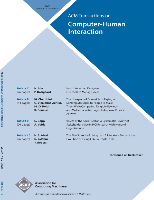
ACM Transactions on Computer-Human Interaction
Illuminating the Dynamics of Human-Technology InteractionACM Transactions on Computer-Human Interaction (ISSN: 1073-0516; E-ISSN: 1557-7325) is a prestigious journal published by the Association for Computing Machinery, focusing on the dynamic and rapidly evolving field of Human-Computer Interaction (HCI). With an impressive 2023 impact factor reflecting its high-quality research output, it proudly holds a Q1 ranking in the HCI category on Scopus, positioning it among the top journals in the field. Established in 1994, the journal has been a vital resource for researchers and professionals alike, featuring innovative studies that explore the design, evaluation, and implementation of user interfaces and interactive systems. Its broad scope encompasses various aspects of HCI, including cognitive processes, user experience design, and the social implications of technology. As an essential read for anyone involved in HCI research and practice, the journal is a gateway to advancements that shape the future of human-technology interactions. The journal is accessible to readers globally, and it plays a pivotal role in disseminating knowledge that drives excellence in software design and user interface research.
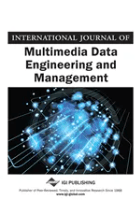
International Journal of Multimedia Data Engineering & Management
Driving Impactful Research in a Digital WorldInternational Journal of Multimedia Data Engineering & Management, published by IGI Global, is a pivotal platform for the dissemination of knowledge in the fields of multimedia data engineering, information management, and technology-driven methodologies. With a keen emphasis on exploring innovative approaches to data management, this journal engages researchers, professionals, and students interested in the rapidly evolving digital landscape. Although currently not designated as Open Access, the journal is accessible through institutional subscriptions, fostering rigorous academic dialogue and collaboration. The ISSN for this esteemed publication is 1947-8534 (E-ISSN: 1947-8542), ensuring its global reach and recognition within the scholarly community. By bridging theoretical perspectives with practical applications, the International Journal of Multimedia Data Engineering & Management supports ongoing advancements and drives impactful research in multimedia technologies.
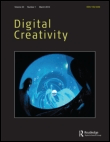
DIGITAL CREATIVITY
Connecting Disciplines to Illuminate Digital CreativityDIGITAL CREATIVITY, published by Routledge Journals, Taylor & Francis Ltd, is a distinguished academic journal that serves as a vital platform for interdisciplinary research across the realms of Arts and Humanities, Computational Theory and Mathematics, Computer Graphics, and Human-Computer Interaction. Since its inception in 2005, this journal has aimed to explore the intersection of digital technologies and creative practices, making significant contributions to our understanding of digital aesthetics, interactive design, and the evolving nature of creativity in the digital age. With an impressive Q1 ranking in Arts and Humanities and notable standings in related computational fields, DIGITAL CREATIVITY appeals to a diverse audience of researchers, professionals, and students eager to engage with pioneering studies and innovative methodologies. While it presents valuable content primarily through subscription access, its credence in driving forward-thinking discussions is underscored by its ongoing relevance and commitment to advancing knowledge in a rapidly changing digital landscape. Join the conversation and contribute to shaping the future of digital creativity.
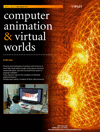
COMPUTER ANIMATION AND VIRTUAL WORLDS
Advancing Knowledge at the Intersection of Art and Science.COMPUTER ANIMATION AND VIRTUAL WORLDS, published by Wiley, is a pivotal journal in the fields of Computer Graphics and Computer-Aided Design, as well as Software. With a focus on the intersection of technology and creativity, the journal provides a platform for researchers and professionals to share innovative studies, new methodologies, and insights that shape the future of computer animation and virtual environments. Currently holding a Q2 category in Computer Graphics and a Q3 in Software for 2023, it ranks #63 out of 106 in its niche, highlighting its influence and relevance in the academic community. Though the journal operates under a subscription model, it also offers options for open access, ensuring that a broader audience can engage with groundbreaking research. The journal has been publishing continuously since its inception in 2004 and looks forward to further contributions as it moves towards its 20th anniversary in 2024. Whether you are a seasoned researcher, an industry professional, or a student eager to explore these dynamic fields, COMPUTER ANIMATION AND VIRTUAL WORLDS is an essential resource for advancing knowledge and innovation.

Proceedings of the ACM on Interactive Mobile Wearable and Ubiquitous Technologies-IMWUT
Connecting Ideas, Enhancing Lives with Interactive TechnologiesProceedings of the ACM on Interactive Mobile Wearable and Ubiquitous Technologies (IMWUT) is a premier journal published by the Association for Computing Machinery (ACM), dedicated to the rapidly evolving fields of interactive mobile technologies, wearable devices, and ubiquitous computing. Since its inception in 2017, IMWUT has established itself as a vital resource for researchers and practitioners, earning a prestigious Q1 ranking across multiple categories, including Computer Networks and Communications, Hardware and Architecture, and Human-Computer Interaction, as evidenced by its impressive Scopus metrics. With its open-access model and a focus on cutting-edge research, IMWUT aims to disseminate innovative solutions and technological advancements that enhance user experiences across diverse environments. Researchers, industry professionals, and students are encouraged to explore this journal to stay at the forefront of research and developments in interactive technologies.